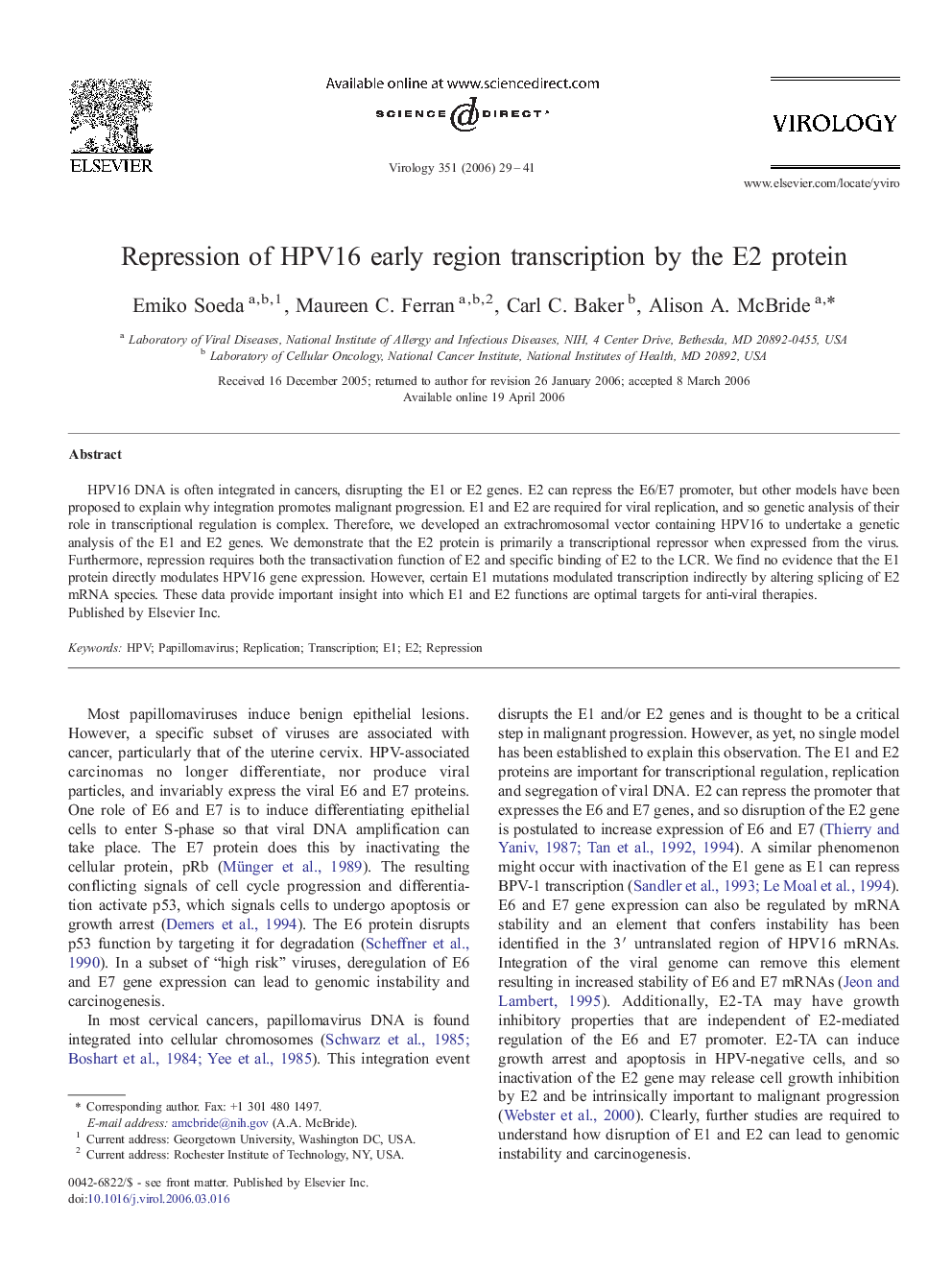| Article ID | Journal | Published Year | Pages | File Type |
|---|---|---|---|---|
| 3426819 | Virology | 2006 | 13 Pages |
HPV16 DNA is often integrated in cancers, disrupting the E1 or E2 genes. E2 can repress the E6/E7 promoter, but other models have been proposed to explain why integration promotes malignant progression. E1 and E2 are required for viral replication, and so genetic analysis of their role in transcriptional regulation is complex. Therefore, we developed an extrachromosomal vector containing HPV16 to undertake a genetic analysis of the E1 and E2 genes. We demonstrate that the E2 protein is primarily a transcriptional repressor when expressed from the virus. Furthermore, repression requires both the transactivation function of E2 and specific binding of E2 to the LCR. We find no evidence that the E1 protein directly modulates HPV16 gene expression. However, certain E1 mutations modulated transcription indirectly by altering splicing of E2 mRNA species. These data provide important insight into which E1 and E2 functions are optimal targets for anti-viral therapies.
